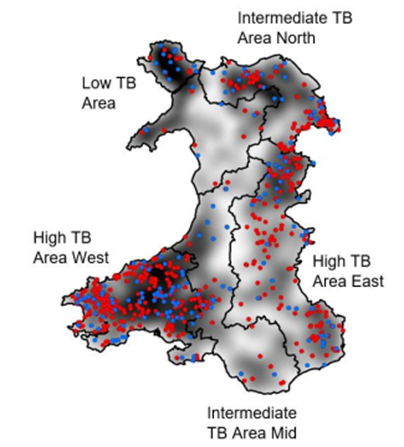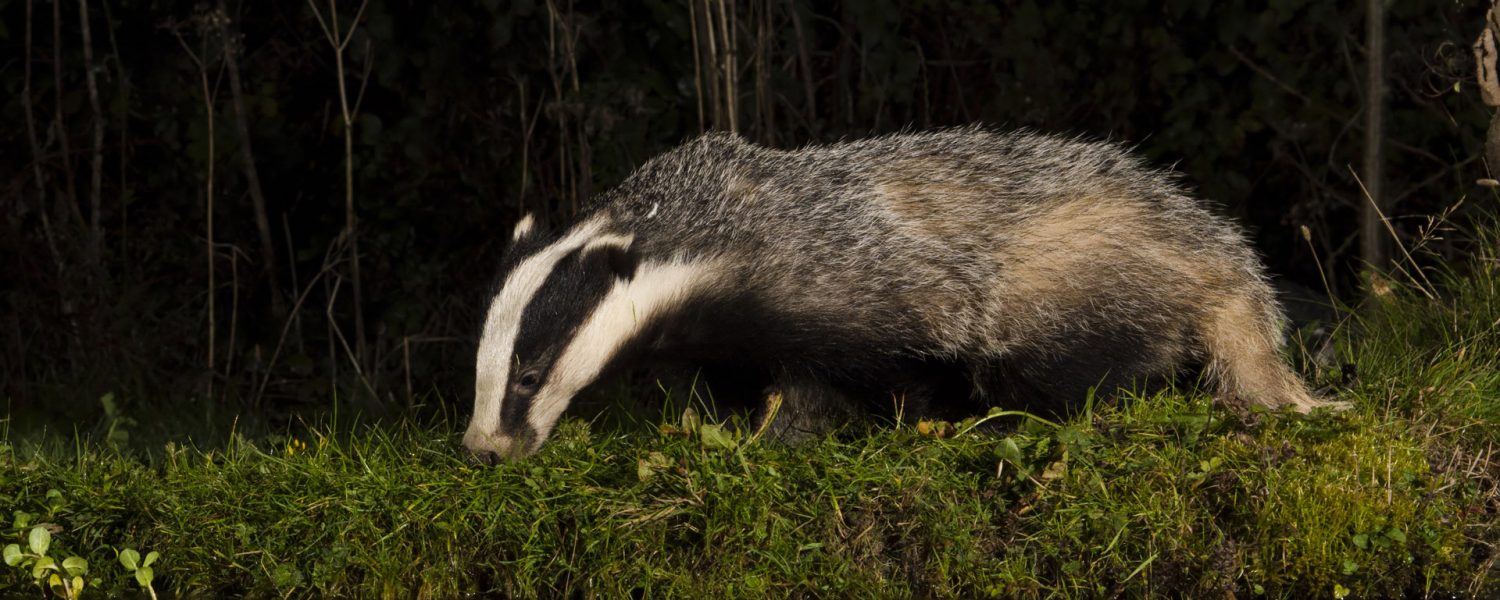Some observers may have noticed bovine TB breakdowns figures for Wales have levelled-off in recent years. For the first time in a long while they are showing a divergence away from the progress of herd breakdown trends that until recently was largely parallel with England.
See the data  here.
here.
And here:
Since 2021, north Wales has experienced an uptick of bovine TB breakdowns in two areas in north Wales, which is causing a levelling of national decline. Looking at the genomic (spoligotype) data indicates that this upsurgence of disease originates from cattle movements from the English border counties of Shropshire and Cheshire, dating back to 2017. Radiating local movement of disease (local trading) within the ‘Low’ and ‘Intermediate’ TB Areas North, in Wales, has pulled down the overall progress compared with England. Wales introduced enhanced measures and increased testing sensitivity several years before England, resulting in its downward trend. But this has now been held back and it has nothing to do with badger culling.
While bTB control has been compromised in two areas of Wales, in 2022 England saw a welcome steeper decline in 0TF-W breakdowns as the use of 6-monthly SICCT testing and gamma interferon to better identify infected cattle began to take effect. Gamma testing raises herd testing sensitivity from around 80% (of the SICCT test) to perhaps 90% or more, halving the numbers the tuberculin test misses but has around 4% false positives. This is one reason why 6-monthly SICCT testing has been preferred as it also detects more than a single annual SICCT test. The additional 6-monthly SICCT tests were introduced in Shropshire and Staffordshire from March 2021 and in the rest of the HRA from January 2022. Defra have had issues updating their data recently, but it now appears that in the HRA cattle tests increased from around 4.61 million 2021 to 5,44 million in 2022 an increase of approaching 20%.
However, APHA data shows how, alongside, gamma testing bit into the main driver of disease – persistent herds, often with large numbers of cows and cow sales each year and infecting many new herds each year through local and auction sales. The big breakthrough came in 2019 with over a quarter of a million gamma tests across the HRA and Edge with a 30% drop in persistent herds across the HRA and Edge.
Further, for 2019, Defra followed the example of the Welsh Government and applied a 50% reduction in compensation for animals moved into a TB breakdown herd that were subsequently removed as TB reactors or direct contacts before the herd regained OTF status. Gamma testing was used in England at considerable levels from 2018-2022 in the HRA, and the disparity became more visible from 2020 as Wales became infected from the English Edge Area.
Peer-reviewed analyses show that in England there is no sign of benefit in the HRA from badger culling. The rate of decline of bovien TB disease prevalence in England’s High Risk Area (HRA) now matches the level of fall of 20% per year seen in the 1960’s, when the disease was quickly brought under control using cattle based measures. Had gamma testing been introduced earlier as in Wales and the Republic of Ireland, the English epidemic would have been well under control by now.
Six-monthly SICCT testing and use of Gamma testing will disclose more infected cows that escape the testing system and bring bovine TB down, but may not finish the job. A more sensitive and specific blood test such as Actiphage will be needed to do that. Cattle vaccination may also play a role too but with a disciplined approach to testing, may be avoided.
Discover more from The Badger Crowd - standing up for badgers
Subscribe to get the latest posts sent to your email.

